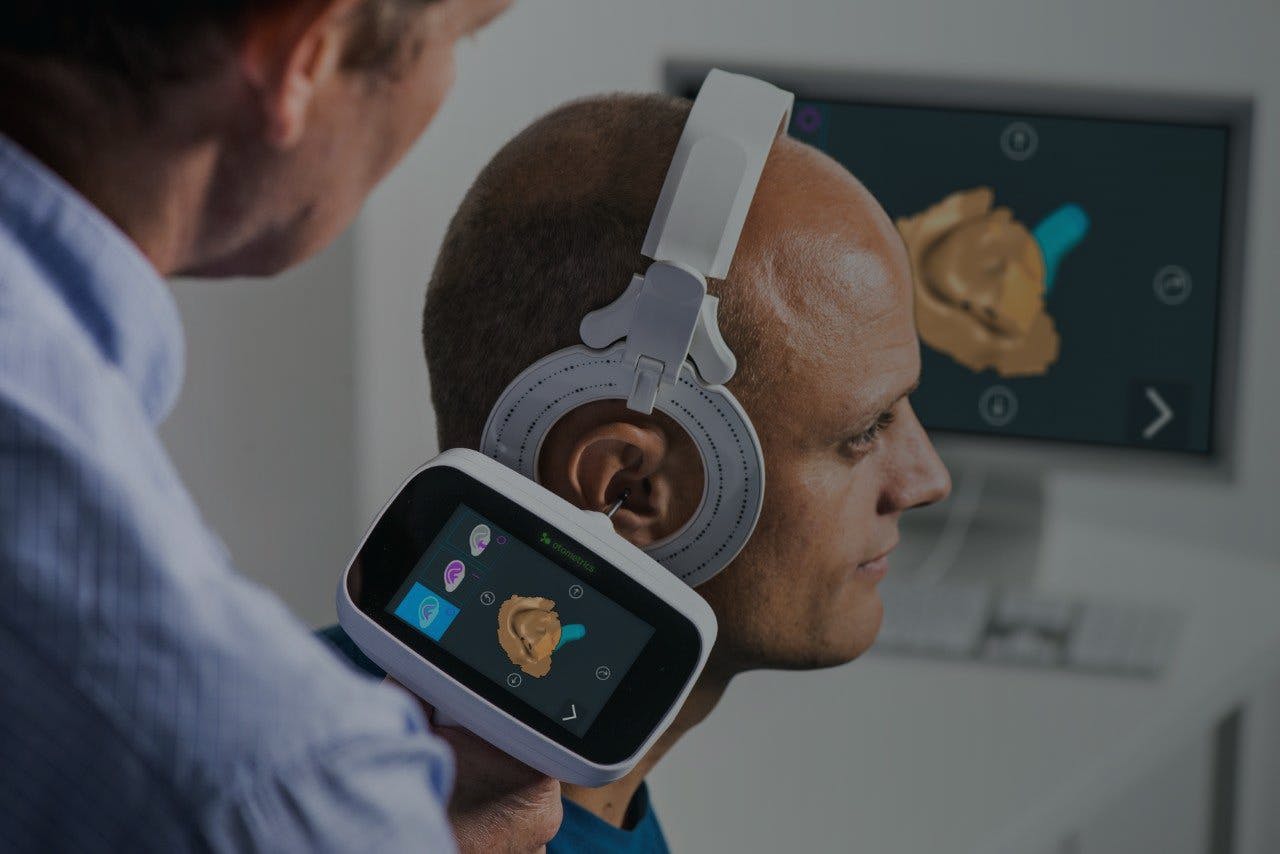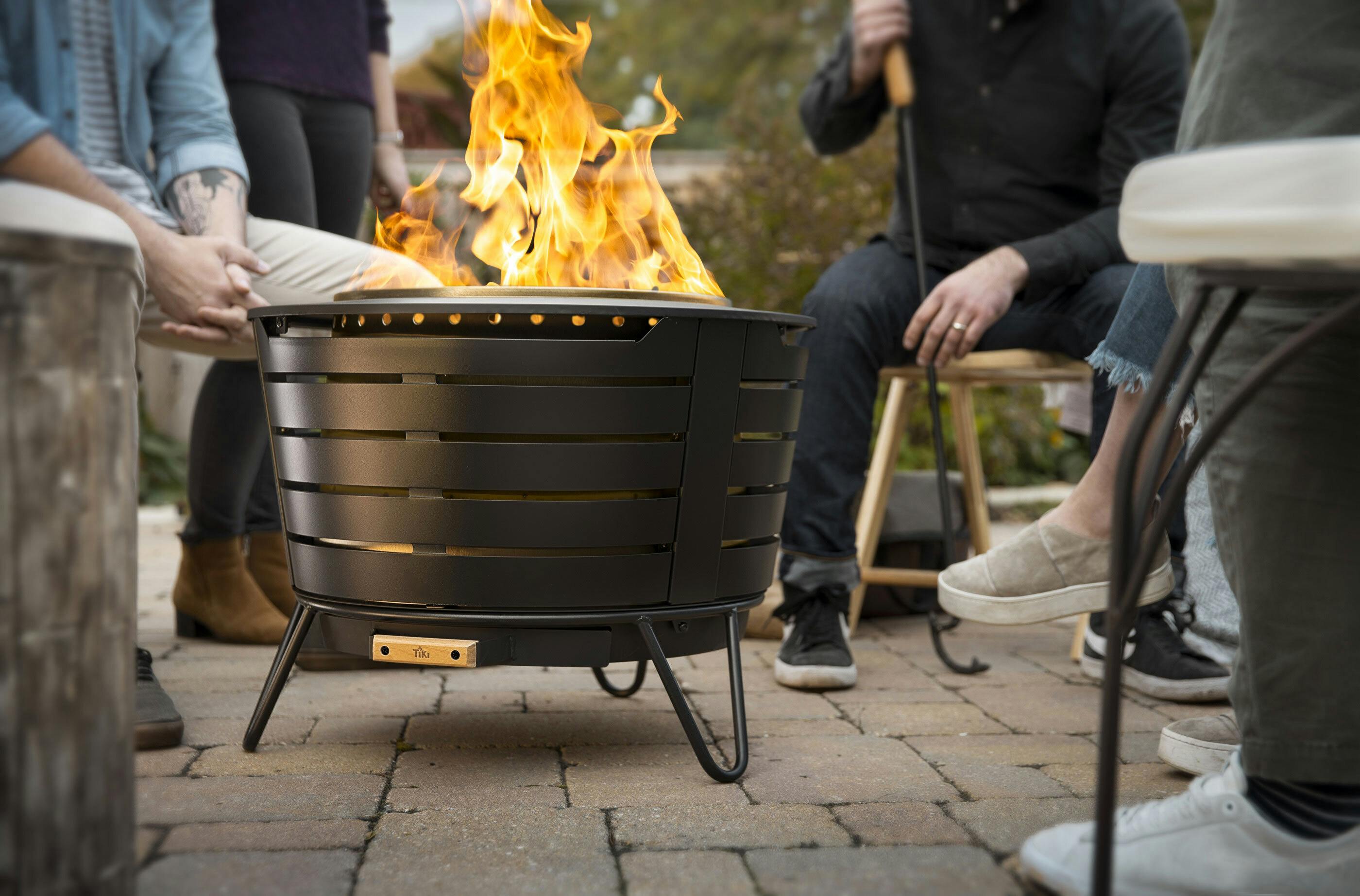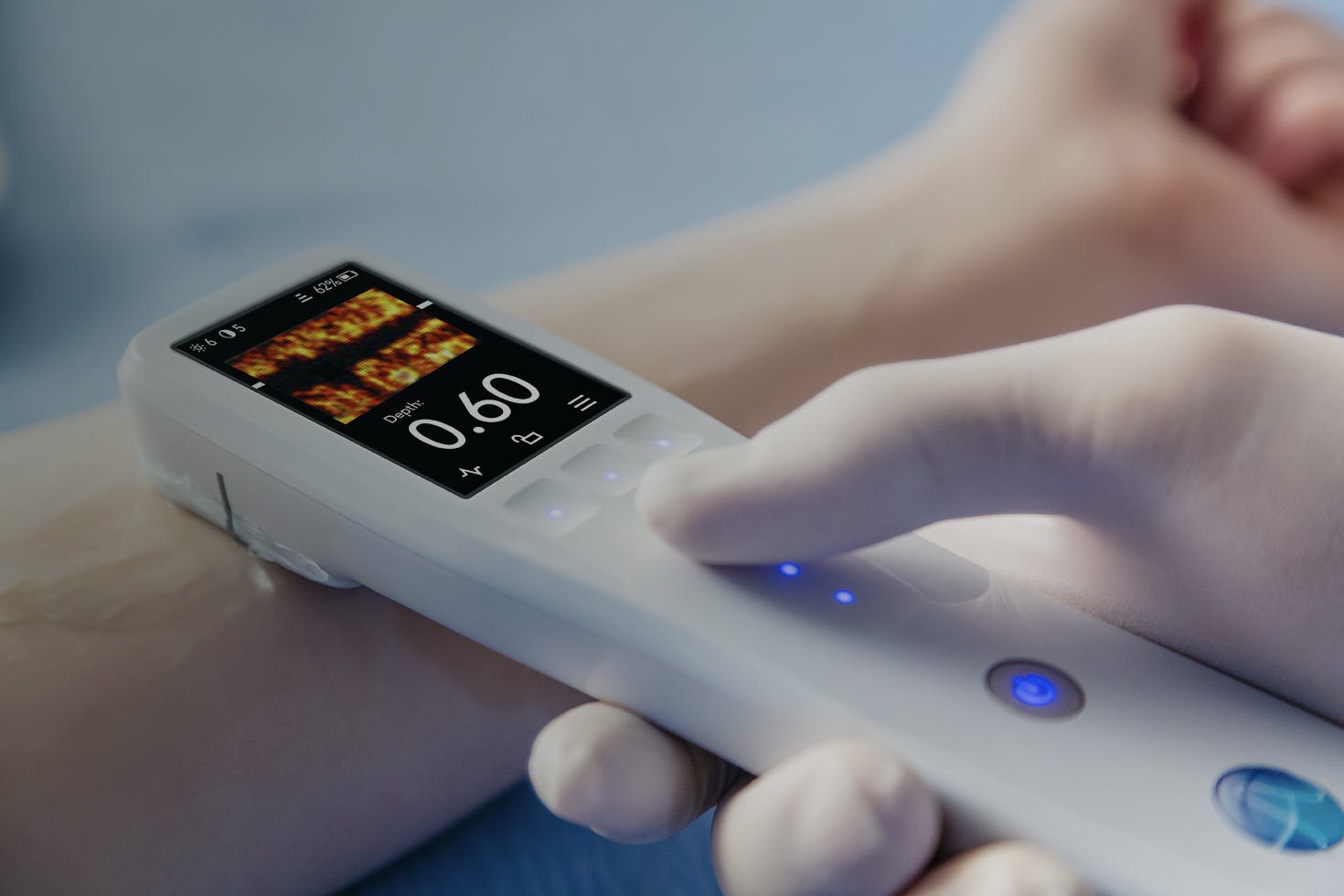Delve is a physical product design consultancy that takes concepts to production through user research, strategy, design, and engineering expertise.
It involves expertly balancing competing tensions—the highest performance and most features, the lowest cost and shortest time to market, and the ease with which the product can be produced in both quantity and quality.
If performance is paramount, the product may become too expensive. If costs are cut, quality may suffer.
Navigating these trade-offs demands expertise from a variety of disciplines.
Over 55+ years of innovation work, we've designed an end-to-end process to consistently deliver strategies, products, and experiences that engender brand loyalty and love.
Delve product development services guide you through the complexities of innovation, powered by a team of multidisciplinary, multidimensional experts.
Learn more about our capabilities:
Award-Winning Work
Winner
Winner
Winner
Areas of Expertise
Over 55 years we've developed thousands of medical products, including surgical instruments, drug delivery devices, home health and rehabilitation devices, and complex medical diagnostic systems.
They are safe, effective, innovative, and successful in the marketplace. They're used by everyone from healthcare professionals to patients to lay caregivers.
We've developed a wide range of products in the IoT category, from wearables to home automation devices to medical tools to connected appliances.
Our complete systems integration expertise enables us to partner with clients to develop connected solutions that are optimized for user experience and ready to bring to market.
Rugged and portable products present deliciously complex development challenges that require tight integration of all our disciplines.
We have a long track record of developing reliable rugged products—or products meant to withstand harsh environments and abusive handling.
Our multidisciplinary product development teams work with clients from many sectors to create breakthrough products.
Learn more:
Physical Product Design
Physical product design is a crucial aspect of the industrial and manufacturing sector. It involves creating tangible goods that cater to various consumer needs. Product designers combine art, science, and technology in order to create innovative products that function well and appeal aesthetically to end-users. The process requires a deep understanding of human-centered design principles, materials engineering, and proficiency in manufacturing processes.
Product design encompasses various stages, from conceptualization and ideation to prototyping and production. In the early phases, designers conduct market research to identify trends and customer preferences that can inform their designs. They then generate original ideas through brainstorming sessions or by drawing inspiration from existing products. Designers also use sketches or digital renderings to visualize ideas before moving on to more detailed three-dimensional models using computer-aided design (CAD) software.
The field of product design and development has grown significantly with advancements in technology. Rapid prototyping tools such as 3D printers have made it easier for designers to create physical models quickly, allowing them to iterate faster during development. Cloud-based collaboration platforms have also enabled cross-functional teams working on different aspects of a project – be it engineering or marketing – to collaborate seamlessly on designs in real-time.
One specialized area within this field is consumer product design, which focuses specifically on creating items for household use or personal enjoyment. These items range from everyday appliances like washing machines and ovens to high-tech gadgets such as smartphones and wearable devices. Designers working in this space must pay particular attention to user experience (UX), as consumers often prioritize ease of use as much as performance when deciding whether or not to buy a product.
To facilitate the delivery of successful products within tight deadlines and budgets, several companies rely on the expertise of specialized agencies that provide services spanning all stages of product design. Partnering with a reputable product design agency can add significant value by:
- Sourcing skilled professionals
- Streamlining processes
- Leveraging industry-specific knowledge
- Reducing labor resources in-house
Additionally, these agencies often have access to a network of suppliers and manufacturers that can aid in the efficient production of goods.
In conclusion, physical product design is a multifaceted discipline that combines creativity, technical skills, and business acumen to deliver products that meet consumers' needs and preferences. The process encompasses numerous stages, from ideation and conceptualization to prototyping and manufacturing. Designers must stay abreast of technological advancements while empathizing with end-users to ensure creations are functional, aesthetically pleasing, and user-friendly.
Consumer product design specifically targets household items or personal gadgets. To excel in this niche market segment, designers must prioritize user experience alongside performance and aesthetics. Lastly, working with a product design agency can provide businesses with resources throughout the development lifecycle by consolidating expertise and streamlining operations. In doing so, an agency can contribute significantly to the success of a product within an increasingly competitive marketplace.
Physical Product Design Process
The physical product design process is critical for creating innovative and functional products that cater to the needs and preferences of a target market. This process involves several steps – from conceptualization to the final prototype – that integrate human factors in design, methodology, and technology. As businesses strive to deliver groundbreaking products that stand out in increasingly competitive markets, product design services become indispensable partners in this journey.
One essential stage in the physical product design process is the creation of a physical prototype. A physical prototype is a tangible representation of a new product concept, allowing designers, engineers, and stakeholders to evaluate its form, function, and usability before making significant investments in production tools or manufacturing processes. Prototypes can help identify potential issues or areas for improvement early on, saving time and resources while ensuring that the final product meets its intended purpose. Product design services play a crucial role at different stages of this process by providing expertise in:
- Materials selection
- Engineering analysis
- Aesthetics development
- User experience (UX)
- Ergonomics evaluation
These services enable businesses to make informed decisions regarding their product offerings based on professional insight and guidance from experienced teams who understand both technical constraints and market trends.
Another vital consideration in the physical product design process is human factors in design. Human factors involve understanding how people interact with products – physically, cognitively, and emotionally – so they can be designed accordingly for optimal performance and user satisfaction. This process may entail:
- Assessing various ergonomic principles such as grip strength, reach envelopes, or hand-eye coordination
- Evaluating cognitive aspects like mental workload capacity or information processing speed
- Determining emotional factors, including aesthetic preferences or cultural differences
By incorporating these elements into their designs for products such as mobile devices and medical equipment manufacturers, designers enhance usability and contribute toward overall safety. As a result, they avoid potential accidents due to poor interactive interfaces.
Product design methodology refers to the systematic approach designers adopt when developing new products. This approach may cover a range of techniques, such as:
- User-centered design, which prioritizes the needs and wants of end-users throughout the design process
- Iterative design, where multiple prototypes are created and tested before finalizing a design
- Participatory design, where users are actively involved in shaping the form and function of products
A well-defined methodology ensures designers consider all relevant factors during product development, from market research and concept generation to materials selection and manufacturing processes.
In conclusion, the physical product design process plays a pivotal role in determining the success of new products in today's competitive market. By leveraging professional product design services and integrating human factors in design, businesses can create innovative solutions that meet user requirements while aligning with technical specifications and cost constraints.
Furthermore, adopting a product design methodology can streamline this process, ensuring more efficient use of resources and better outcomes for businesses and consumers. The right methodology can also help companies identify cost-cutting procedures when designing products.
Physical Product Design Challenges and Future Trends
The realm of physical product design has been constantly evolving, presenting designers with new challenges to overcome and offering exciting opportunities for innovation. As we move into a future marked by rapid technological advancements and increased environmental awareness, organizations must stay informed about emerging trends and adapt their strategies accordingly. This part of the article delves into the areas of AI product design, sustainable product design, and innovation, as well as the various challenges designers face in the present age.
AI
Artificial intelligence (AI) is proving to be one of the most transformative technologies across industries, heralding a new era in product design. Integrating AI capabilities into physical products opens up possibilities for enhancing user experience and functionality. For instance, smart home devices equipped with AI can now learn from users' preferences and habits to offer personalized solutions to their needs.
However, striking a balance between human-centered design principles and AI-driven features presents its own challenges for designers. They must ensure these intelligent systems are easy to use while maintaining transparency about data collection practices so as not to compromise consumer trust.
Sustainable Product Design
Another prominent aspect of modern product design is sustainability – an increasingly important consideration for environmentally conscious consumers when purchasing products. Brands prioritizing sustainable product design and innovation can position themselves ahead of competitors and support the environment. That entails selecting eco-friendly materials, promoting energy efficiency, maximizing resource utilization through clever designs, and incorporating end-of-life considerations like recyclability or biodegradability into products' conception.
However, adopting a sustainable approach does not come without its share of difficulties for designers. They must find materials that meet eco-friendly criteria without compromising on aesthetic appeal or performance capability, which can be challenging. Additionally, navigating complex regulations surrounding sustainability certifications further complicates matters when it comes to integrating environmentally sound practices within the product lifecycle.
Innovation
As we look towards the future of product design, several trends stand out as potential avenues for innovation. Augmented and virtual reality (AR/VR) technologies are poised to revolutionize how we interact with our surroundings, offering new opportunities for product design that integrate physical and digital elements.
Another exciting development is the rise of the Internet of Things (IoT), enabling interconnectedness between various products and systems to optimize efficiency and improve overall user experience. However, embracing these emerging technologies also presents challenges for designers. As they work to incorporate AR/VR or IoT elements into their creations, they must consider data privacy concerns and potential cybersecurity vulnerabilities associated with connected devices. Data governance legislation in the design industry, such as GDPR, mandates expensive penalties for businesses that share certain sensitive information with third parties.
In conclusion, keeping up with the dynamic landscape of physical product design calls for an adaptive mindset that embraces challenges and future trends. By incorporating AI-driven features, adopting sustainable practices, and harnessing technological advancements such as AR/VR or IoT capabilities, designers can stay ahead of the curve while still delivering products that resonate with consumers' ever-evolving preferences. Ultimately, striking a delicate balance between functionality, aesthetics, sustainability, and technological prowess will be key to shaping innovative solutions.


